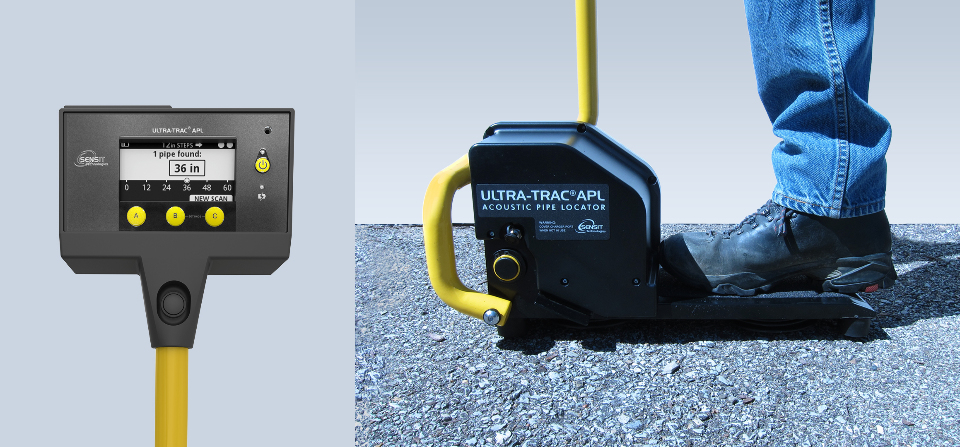
An acoustic pipe locator accurately locates underground plastic piping, which is often unmarked and difficult to locate using conventional methods. Collaborating amongst disciplines, we advanced SENSIT Technologies' existing scientific lab prototype into a fully commercialized product and supported its transition to manufacturing.
Insights gained during research, such as the variety of terrain and grade in which the device is expected to work, available storage space, the average site size that workers are surveying for pipes, and many other interaction details translated into design and engineering actions. The form factor, feature details, and assembly design are reflections of the need for the device to be rugged, yet comfortable to carry and easily stored. Anthropometric data was pertinent in determining key interactions, such as display angle, handle height, and weight distribution. In addition to functional requirements, emotional reactions to the aesthetics and materials used were intentionally guided and designed to maintain family continuity within the company’s product line and to meet market expectations within the industry. The interface, which builds up readings across a variable distance in order to get a complete underground scan, was translated into a clear, easy-to-follow program that provides understandable feedback on a reading’s quality and timing. It also allows the user to view a final map of underground pipe locations. We also re-engineered the prototype device from top to bottom. The core acoustic locating technology, including the adaption of software algorithms and the design of the main and UI circuit board assembly, required electrical and software engineering capabilities. Mechanically, two separate enclosures, a structural handle, and component mounting and cable routing were engineered using knowledge of molded part design, weldment design, and design for assembly. From start to finish, this project utilized the majority of our disciplines - human factors and ethnographic research; mechanical, electrical, and software engineering; and industrial and interface design.